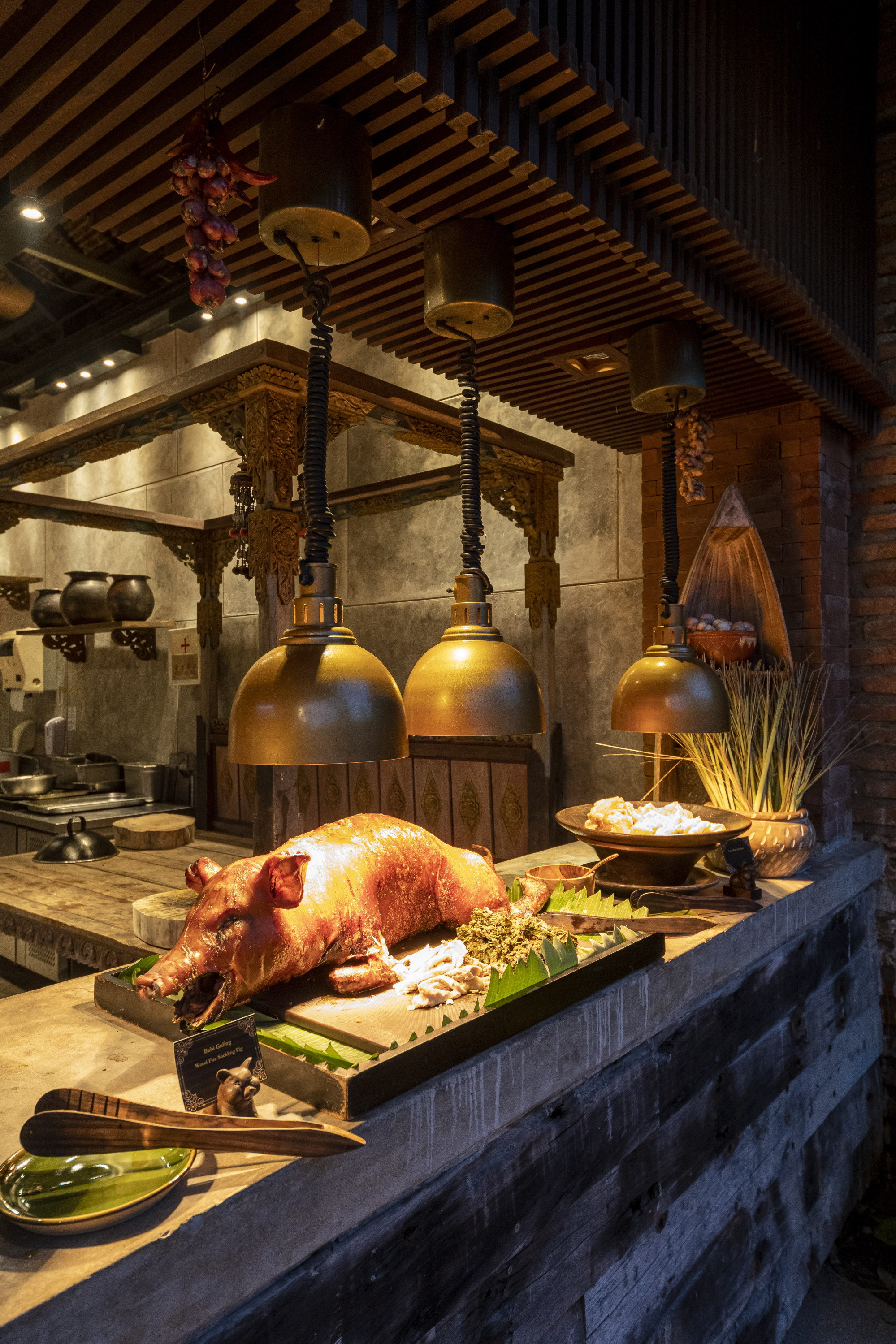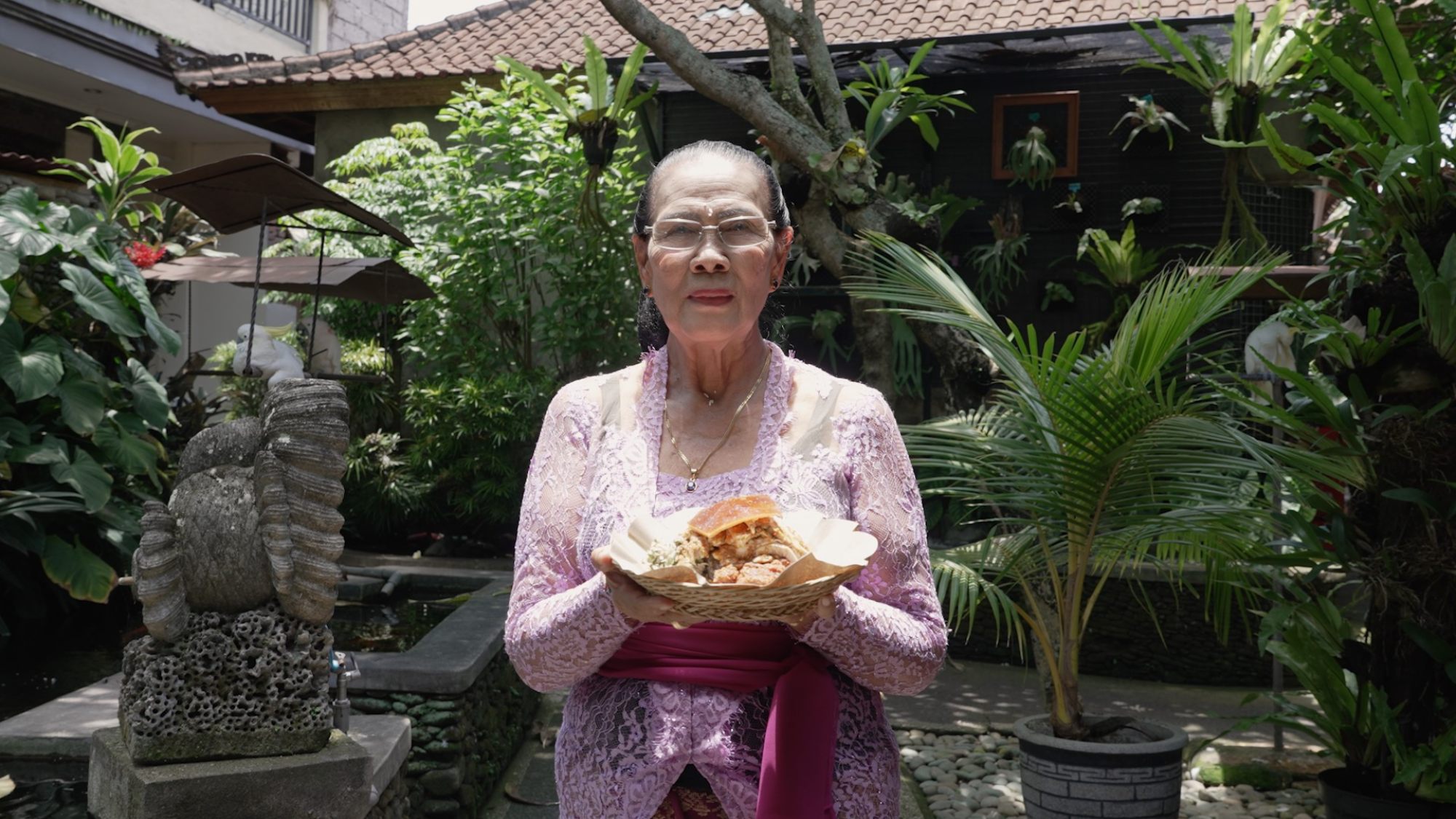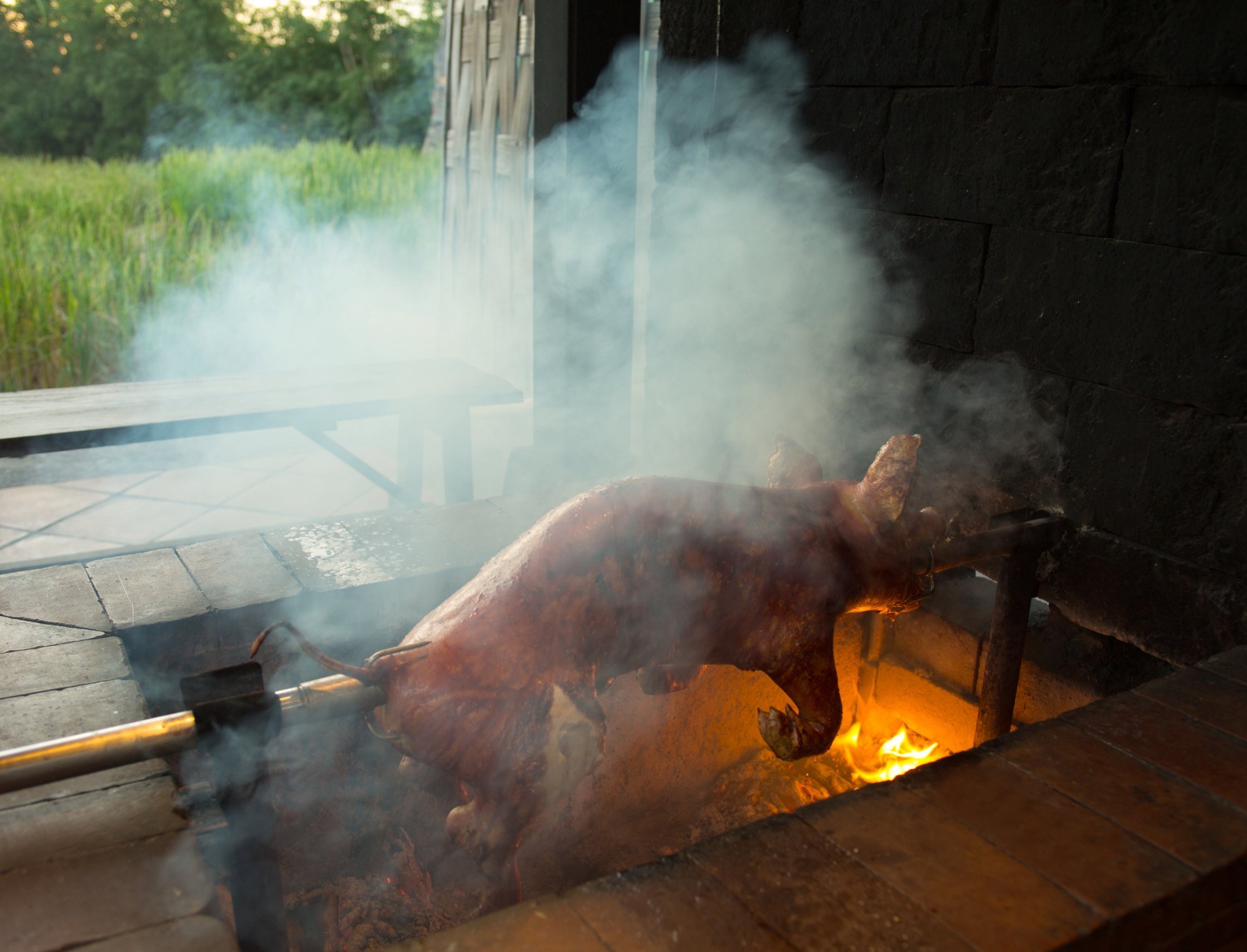About 87 per cent of Balinese people identify as Hindu, in contrast to the rest of the archipelago, where Islam is the dominant religion – one that forbids the eating of pork.

Babi guling is very popular in Bali, where there are close to 200 restaurants that specialise in the dish.
“There’s probably, I don’t know, 180 different [babi guling] places on the island. The island is quite big … and these places are really everywhere,” says Niki Kasli, an events manager who owns the Instagram account Babi Guling Champion and has a mission to try all the babi guling restaurants in Bali.
Kasli has lived on the island for nine years and so far has visited about 60 of the restaurants.
Babi guling restaurants did not exist until the 1980s. Balinese roast pork was largely eaten at celebrations, such as weddings and important Hindu festivals, where it is offered to the gods.
Affectionately known as Ibu Oka or Madame Oka, the matriarch of the restaurant is credited with being the first to separate babi guling into individual portions and sell them to tourists; before her, nobody could eat the ceremonial dish individually.

Her first restaurant came about because of a royal connection. “The royal family offered an empty community space for us to start this restaurant,” says Ibu Oka.
“The royal family had a lot of friends who wanted to taste babi guling, and at the time it was hard to find a restaurant that served it individually. That’s how we became the designated providers of the dish for tourists in the 80s.”
Preparing babi guling is a gruelling process – especially in the Indonesian heat. Restaurant workers rise at 2am to slaughter between three and five pigs, depending on the season, then chefs stuff the pigs with cassava leaves, spice paste and other ingredients such as ginger and shallots.
The pigs are then spit-roasted over a bed of charcoal for five to six hours, basted continuously with coconut water.
Much like the roast suckling pig served in Hong Kong and China, where it is also an offering to the gods, the pig is prepared hours in advance and celebrated in a ceremony before its meat is shared out. Eating it cold is part of the ritual.
When we tried Ibu Oka’s babi guling it was also served cold. However, the skin was thin and crisp, and while the meat was a bit tough because of the size of the pig used, what stood out was the flavour of the spices.
Wayan Sudiasa, sous chef of Ayana Resort Bali, stresses the importance in the preparation of babi guling of base gedep, a spice paste whose ingredients include nuts, ginger, turmeric and chillies and which serves as the base of Balinese cuisine.
“The spices that we use in babi guling are very important; it’s the flavour that differentiates Balinese food from [that of] the rest of Indonesia. The use of coriander, garlic and shallots is one of the most important things when making the dish.
“Having fresh, organic herbs makes a difference. We use the herbs from Ayana Farm, our edible botanical garden.”


The babi guling at Kampoeng Bali is served as part of a buffet, and it makes sense to use a smaller, suckling pig; the skin is amazingly crisp.
The increase in demand for the dish drove the native species of pig in Bali to the brink of extinction. George, the owner of Bali Heritage Pigs, a free-range, organic pig farm that preserves the Bali black swayback pig through breeding, explains.
“It’s a smaller, lard type pig that has a sway back and a hanging belly. It’s been native to Bali for over 1,000 years.
“There are cousins of it in Spain, the Iberian pig or pata negra, famous for its use in making bellota ham. It has a similar structure of meat and the way the fat is layered within the meat.”
He explains why the breed came close to extinction. “It’s an economic issue,” he says. “It takes double the time, twice the care, twice the money to raise a native pig on an island where tourism is such a driving economic factor.
“Consumers needed more meat, bigger and faster, and the farmers simply introduced other pigs from overseas like the Duroc and interbred [them with] their pigs to feed the tourism industry.”
To raise one of his black swayback pigs to 100kg (220lb) on the organic feed that he makes on his farm takes about a year and a half, while a European pig like the Duroc can reach that weight in five months if given commercial feed with growth boosters such as hormones and maybe steroids.

“I call it a dying flavour,” George says of the native pigs’ meat.
Will Meyrick, owner of Mamasan Bali in Seminyak, has experimented with using meat from the black swayback pig, including grilling it and dry ageing it to turn it into ham.
The dry-aged ham served at Mamasan has a strong, gamy flavour that is similar to that of Spain’s dry-aged Rubia Gallega beef.
Asked why he does not make babi guling, Meyrick says: “Because the produce is organic, the fat distribution and size varies with each batch and it’s very hard to train my staff to consistently deliver the same dish. We have to modify how we approach the pork with each shipment.”
Another aspect of babi guling is that until the tourism boom it was always eaten in company. “In Balinese culture, we have a specific practice called magibun,” says Sudiasa.
“It’s the way we eat with our family, friends and even our neighbours. We put everything in the middle, such as rice and also other traditional dishes.”

This sense of community is so strong that Doni Marmer, a researcher and amateur chef who moved to Jakarta from his home in Bali, started a small dining group.
“I started my supper club in Jakarta in my apartment as a cure for my loneliness. I’d invite my friends and people that I know to enjoy meals that I cook. We’d have a conversation and kind of simulate what I usually have in Bali.”
Most homes in Bali have a pagoda-like structure called a bale, in the middle of which a table is usually placed for meals.
“It’s a structure that is usually outside. Sometimes it’s big, sometimes it’s small, and most have a roof. We usually lift it from the floor so it’s easier for people to sit down. It’s a gathering space for the family to sit down, eat with their hands or have family discussions,” Marmer says.
While babi guling plays a significant role in Balinese dining, it is not representative of everyday cuisine.
“It’s a very expensive dish to make at home. So usually we only eat it during ceremonies. That’s probably twice a year that we can get a chance to eat it, and when we do we cook it together,” Marmer says. This sense of community is essential to Balinese dining.
Eating babi guling, while delicious, is the equivalent of insisting on trying a slice of wedding cake or a serving of Christmas turkey when you arrive in Bali.
“Balinese food is regional. So where I’m from, there’s a lot of fish, a lot of seafood. We use a lot of banana leaves, or limes in some areas, and in other areas they use a lot of chillis or vegetables,” Marmer says.
“Anthony Bourdain, may he rest in peace, needed to spend more time in Bali. Everyone needs to spend more time in Bali.”

